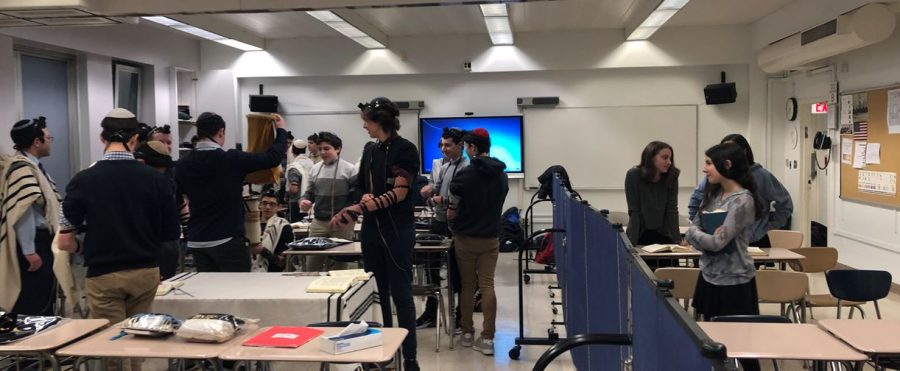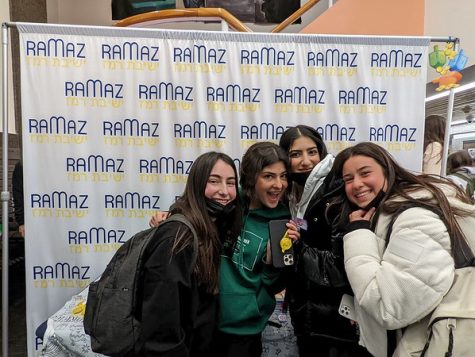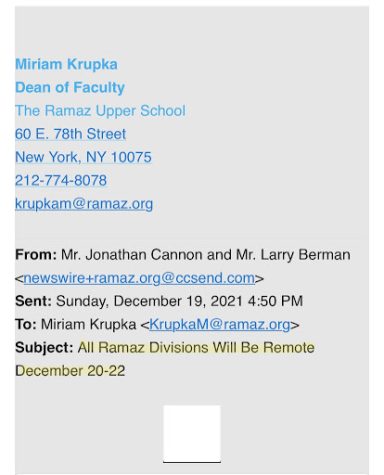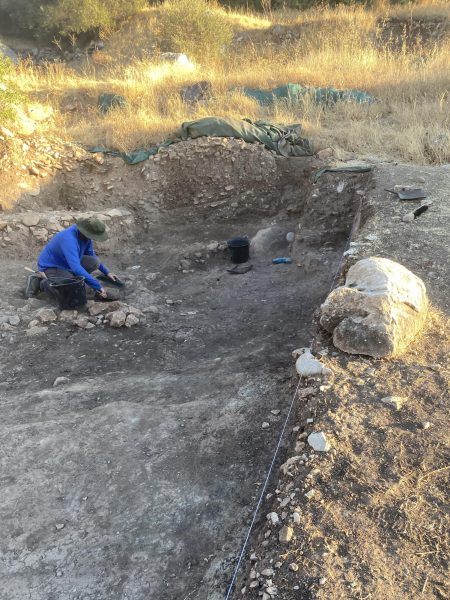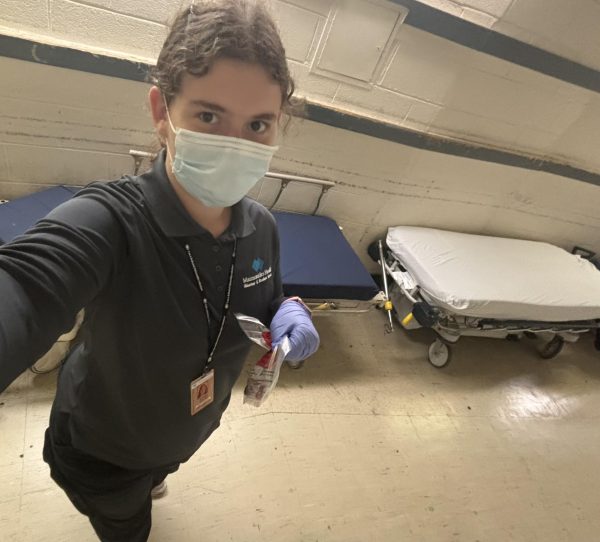New Minyanim, in Person and over Zoom
“See different” is this year’s theme at Ramaz. Members of the Ramaz community utilize this mission statement as they take initiative to implement new minyanim at Ramaz. Grade-wide student-led Ashkenaz minyanim are standard for students. In addition, Ramaz offers a Sephardic minyan for all four grades. In the spirit of seeing different, many students decided to stray from the normal Ashkenaz minyan and create their own. The school has implemented various minyanim for students to attend: singing minyan, women’s tefillah, Manu’s explanatory minyan, the mincha minyan on the third floor, and the Nusach Sefard minyan.
It is known that members of the Sephardic minyan have strong customs and beliefs. Would they be willing to try new minyanim? According to Ella Rabbanni ’21, “I think it’s great for everyone to try out different minyanim because it shows how many different ways there are to express your spirituality.” Furthermore, all of the new minyanim typically daven in the Ashkenazi nusach. This could lead Sefardim to try something that is different than how they are accustomed to davening.
According to Rabbi Stochel, “These new minyanim were implemented as a response to student feedback.” Rabbi Stochel continued by saying, “Although we feel that grade solidarity and bonding via davening as a grade is important, we are still pleased to offer other options to students for tefilah on a limited basis.”
For students who enjoy a more lively davening, the singing minyan is the right place for them. It is a minyan for all grades that occurs once a week. Unlike the traditional grade minyans, in singing minyan more parts of the davening are dedicated to communal singing.
Women’s tefillah gives women the opportunity to get more involved in davening. According to Arielle Levy ’21, “I appreciate women’s tefillah because it allows me to feel represented. It gives me a voice whereas the traditional minyan does not.” Women can take leadership roles in the service. Though this minyan has been going on for a couple of years, it has begun to meet more regularly this year.
A new minyan, initiated by Manhattan NCSY Director Manu Hass, is the explanatory minyan. The purposes of this minyan is to give more of an explanation about the tefillah. “I think that [the explanatory minyan] would be better because it would allow me to feel more connected to davening instead of Ashkenaz minyan where we just mumble the words,” said Isaac Silverman ’21. However, he said, “Usually new minyanim are announced on schoology in a single post that just gets lost in all other updates. I think these new minyanim should be publicized more like clubs with signs that draw more attention to them.” More students would be drawn to the interactive minyanim if the leaders publicized them more.
A new addition this year is the new mincha minyan that meets on the third floor everyday. A member of this minyan, Aryeh Teller ’20 said “This new minyan gives me and other serious daveners an opportunity to pray in a positive environment that admires participation, singing, intent, and unity. I hope the minyan is only the start of greater things to come.” This minyan is for serious daveners and was started by Matthew Gross, a Yeshiva University student interning at Ramaz to gain experience in education. Currently, there isn’t a mechitza in the room, and only men daven with the minyan. “We have no problem with a mechitza or girls coming,” said Gross, “just we don’t literally have a mechitza and it hasn’t come up yet.” However, some female students feel excluded by the lack of mechitza. “I would say that it seems unfair to assume that there are only guys who want to take mincha seriously, and that there aren’t girls who want to participate in a meaningful mincha as well,” said a female student.
Lastly, students this year put together a Nusach Sephard minyan. This includes Sepharad tunes, which is how a majority of the Chassidim pray. Raffi Sobell ’23 said, “I prefer this minyan because there is less talking. We mainly daven like normal Ashkenazim except for an extra portion in tachanun called viduy and a few other words here and there.”
What all these minyanim have in common is that students feel more connected to tefillah when they can daven according to their preference.
As a result of the COVID-19 outbreak, Ramaz closed its doors, and most of these speciality miyanim are no longer taking place. However, the school acted quickly and implemented an optional davening over Zoom. Though it does not count as a minyan, some students feel more comfortable davening in the presence of other students as opposed to in complete solitude. Jake Slochowsky ’21 said, “I like the Zoom davening because davening all together is much stronger, and it makes the tefillah more powerful.”
According to Rabbi Slomnicki, the goal of the Zoom minyan was “having a place that kids and adults could feel a sense of community when they davened even if not technically a minyan.” He continued by saying, “I find it energizing to know that there is a zman tefillah and seeing others davening gives people chizuk.”
Although most of the specialty minyanim are no longer meeting, women’s tefillah is also trying to implement occasional Zoom davenings. “What I really like about women’s tefillah over zoom is it gives me a sense of community and strength during this difficult time,” said Beth Kahn ’20. The explanatory minyan will also be having a meeting over Zoom.
Even though students are no longer able to have different minyanim in the building, during this pandemic, Ramaz is adapting to Zoom minyanim to enable students to come together in different ways.

